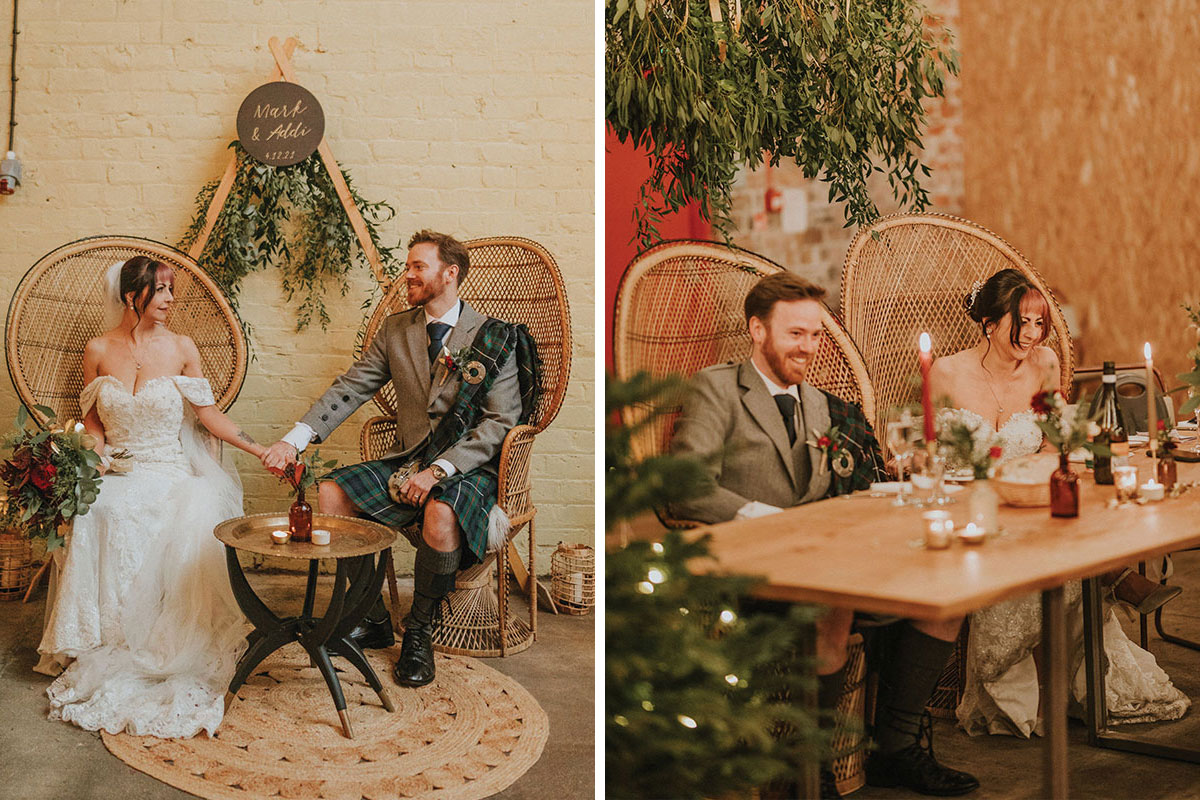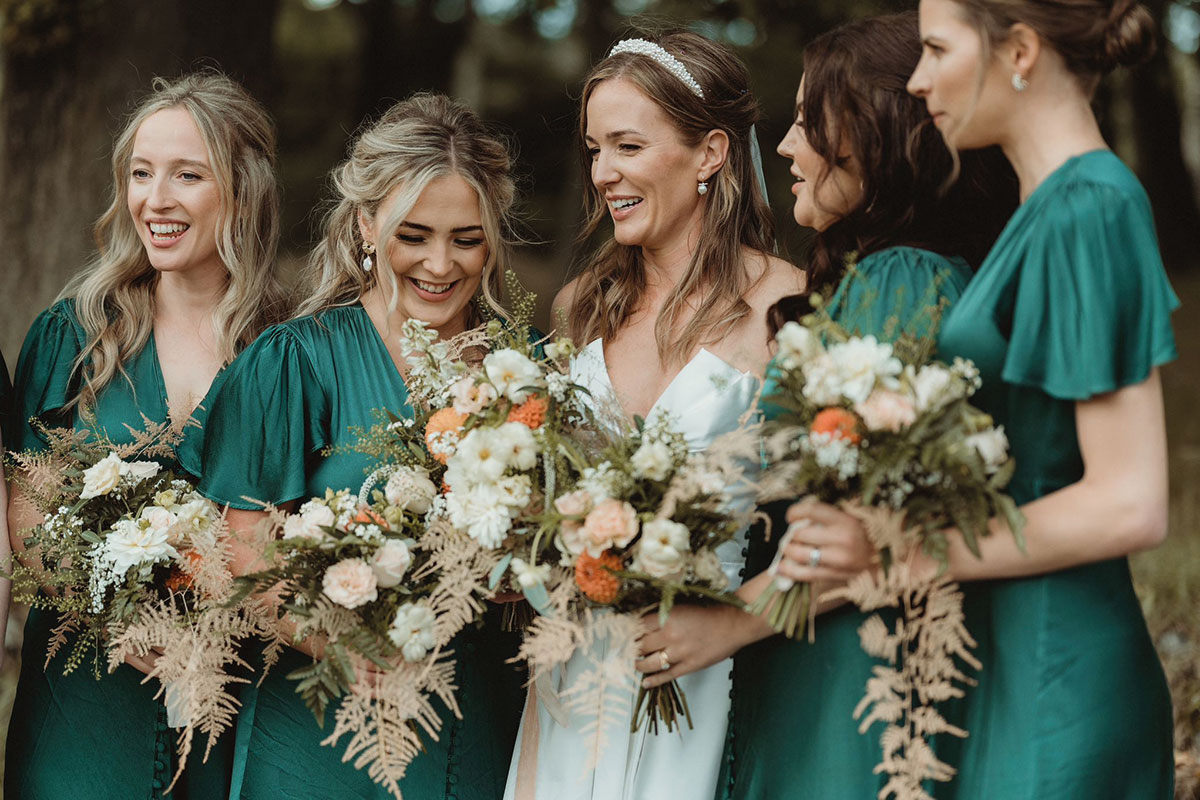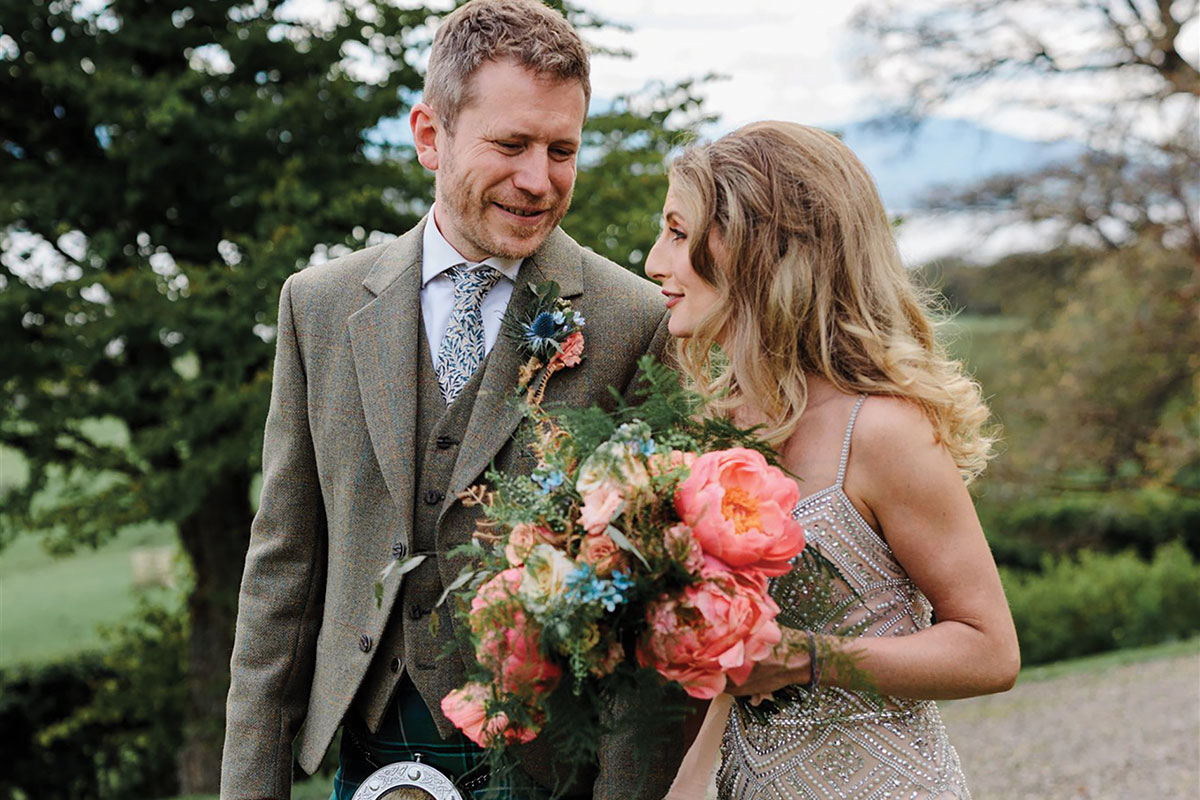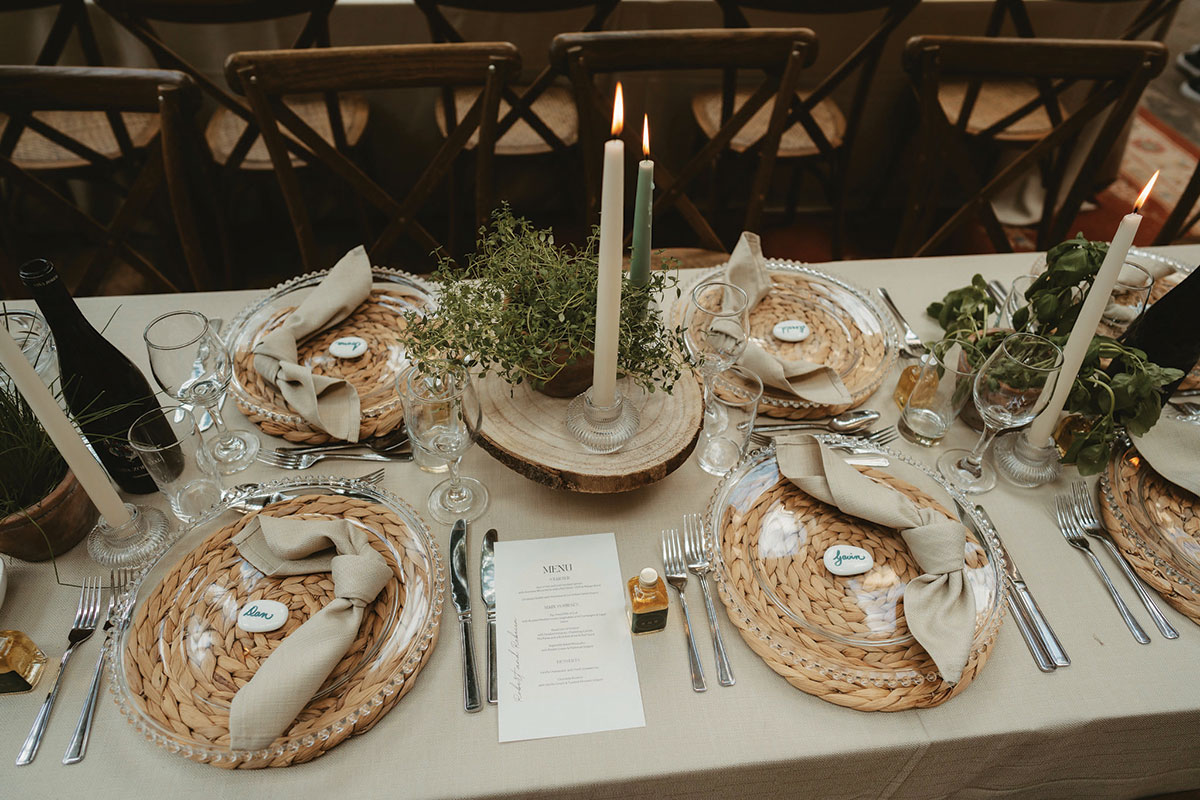There's more to choosing your wedding centrepieces than you might think. From elevation to serving set-up and even floral scent, we chat to top Scottish florists for all their best tips and styling advice
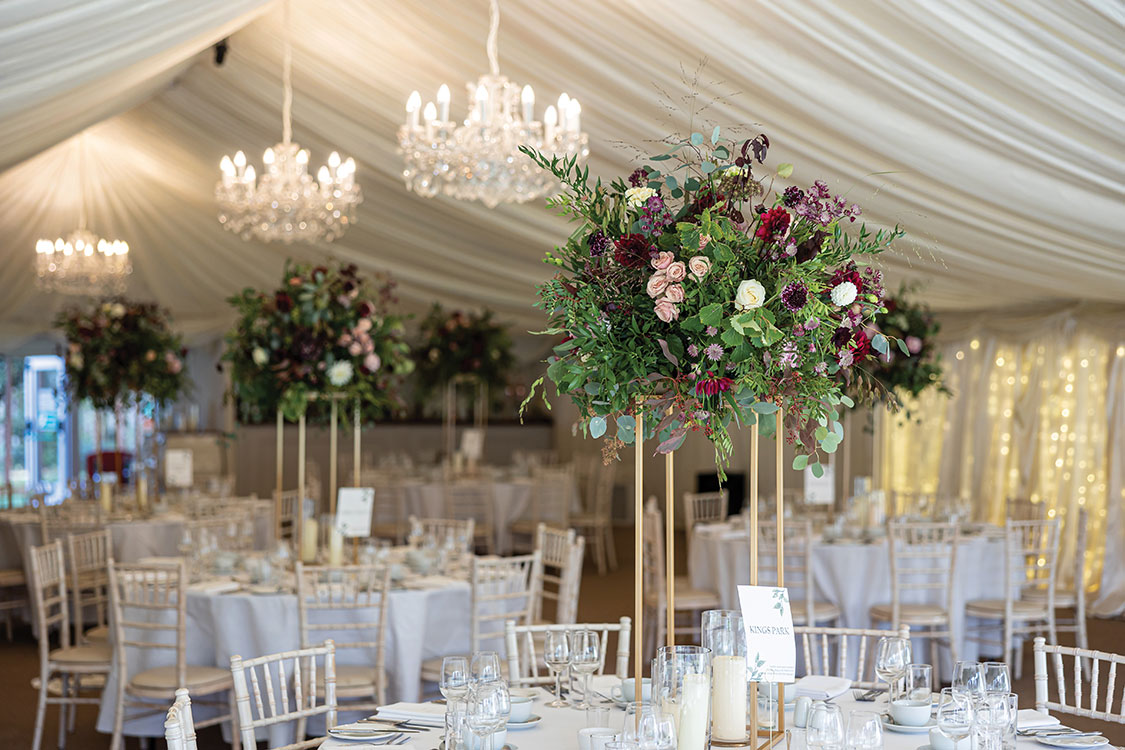
There’ll be no problems letting both the wine and the conversation flow if you opt for elevated centrepieces like these ones from Wildflower & Willow (Photo: Ryan White Photography)
When it comes to planning your wedding day flowers, it can be really easy to get caught up in the idea of massive trailing bridal bouquets and having an abundance of blooms adorning the arch behind you at the altar.
But look at the timeline of your day: the reality is that the ceremony will be over faster than you can say “You may now kiss the bride”. It’s your reception that’ll clock the majority of your wedding hours.
As Kelly Vaughan-Clinkscale of Wildflower & Willow puts it, “Couples devote a big chunk of their budget to florals, so we want to ensure they get the most out of them. Table centrepieces are a great way to do this.”
To ensure your displays are the centre of attention – for all the right reasons – we've called in the floral experts to answer some common wedding display questions and share their top tips too.
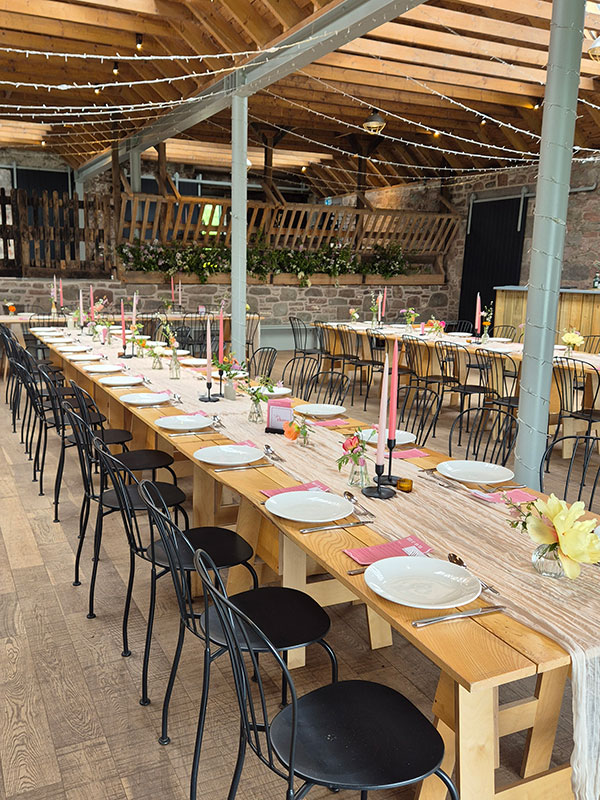
For this Guardswell Farm wedding, Flowers by Fiona Hay lined each long table with blooms in bud vases and colourful candlesticks to match
What is the most popular form of centrepiece for weddings?
The most common wedding centrepieces are floral arrangements. What can we say, it's hard to turn down a bunch of brilliant blooms! But if flowers aren't for you, or you're looking for alternatives to balance out the budget, don't worry, there are plenty of other ways to decorate your tables.
Should table shape and length affect my choice of centrepiece?
“As for table shape, this is also something to be discussed as for the most part, a round table centrepiece is centralised and so an elongated arrangement can look a little off," Kelly Vaughan-Clinkscale, of Wildflower & Willow says.
"Longer tables seem to be trending towards lots of mini arrangements providing height and texture and varied interest with both the floral and the vessels used, or on the higher budget end, more solid floral table runners.
"However, when we get creative, we can really make just about any style of arrangement work on any table! This is where couples should trust their florist to help with the right designs!"
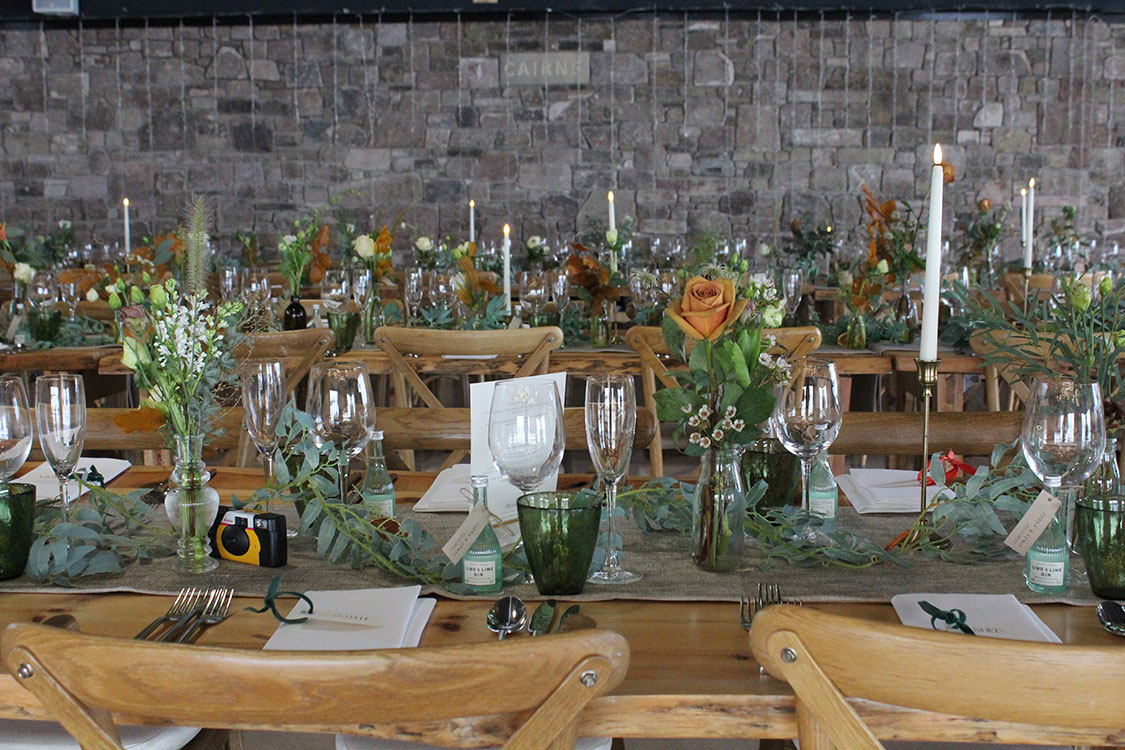
Thanks to their versatility, scattered bud vase table settings like this one by Flowers by Fiona Hay are totally trendy!
How to use bud vases as wedding centrepieces?
Due to their small size and easily adaptable nature, bud vases have become a popular wedding centrepiece style.
Florists are sure to have various vase options available for use but – if couples want to have additional say in the displays – collecting jars and vases of different shapes and sizes to mix and match, can be a fun way to add varying heights and pops of colour to the wedding dinner decor.
The Greenshed Flower Studio’s Helen Hardman loves using bud vases and jam jars: “They look great, not only in a neat line or group at the start of the day, but also when they get a bit higgledy-piggledy at the end.”
Wildflower & Willow's Kelly adds that another reason bud vases are such a popular option is that they work well "for both long and round tables, and can be altered easily to suit different budgets by increasing or decreasing the quantity."
"They're also great for dressing lots of areas if the venue needs to move tables for the evening," Kelly finishes.
What size and shape should my centrepiece florals be?
Beyond the season’s favourite styles, the height and width of your table blooms are definitely key things to keep in mind.
Kelly specifically calls her displays "social flowers" explaining that her idea is to design arrangements that are "either low enough, or tall enough to not hinder conversation across the table."
Florist Fiona Hay of Flowers by Fiona Hay agrees, saying, "You want your guests to enjoy being at the table, be able to see those making speeches, and to chat away to those they're seated with!"
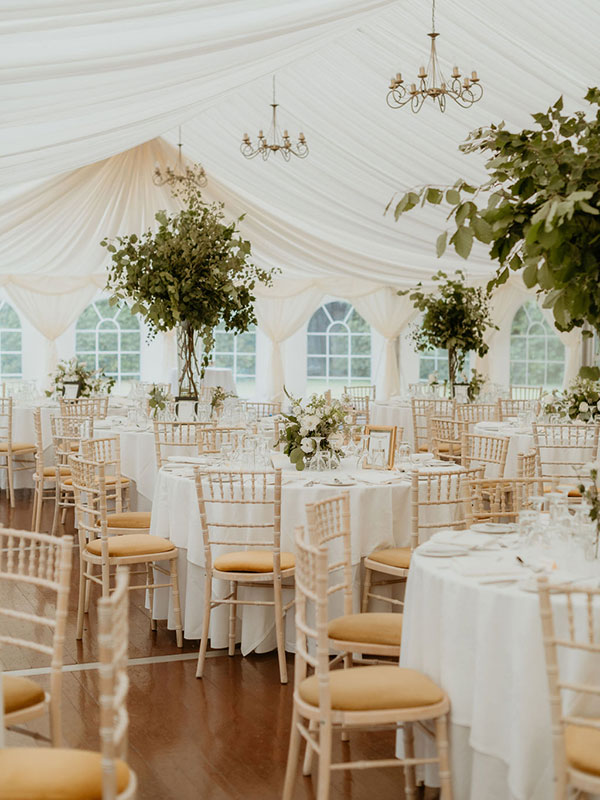
Multiple levels of florals factor into Wildflower & Willow's marquee wedding display (Photo: Claire Fleck Photography)
Read more: Wedding flowers for every season – tips and tricks from florists
Which types of flower arrangements can be used on wedding tables?
First and foremost there has to be room for the delicious meal you've selected for your guests. From charger plates to multiple wine glasses, there's already a lot going on at each person's place setting, so the size of your floral arrangements and how they fit in and amongst the rest of the necessary tableware, is definitely something to consider.
Helen makes a point of ensuring the flowers work with, not against, the rest of the table set-up: “If you are having sharing platters rather than a served meal, the centrepieces need to be smaller to allow space for the dishes.”
Which flowers should you not have on the table alongside your wedding reception meal?
Speaking of the food, Kelly stresses the importance of avoiding strongly perfumed flowers such as lilies: “I rarely design weddings with lilies anyway but if I did, I wouldn't use them on the tables. They have such a strong divisive scent and we certainly wouldn't want to be responsible for putting anyone off their beautiful meal."
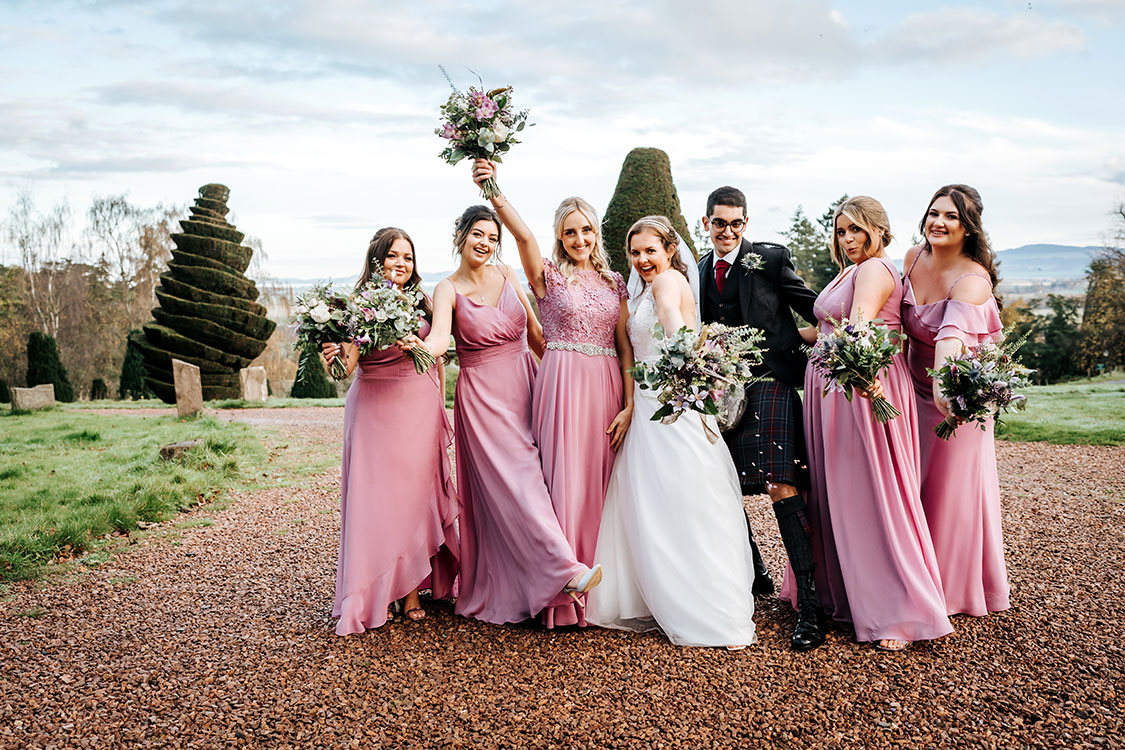
Repurposing at it's finest – these floral bunches by The Greenshed Flower Studio went from bridesmaids' bouquets to centrepiece displays in the same day (Photo: Dougi McMillan Photography)
What are some ways flowers can be repurposed throughout our wedding day?
After all the time, money, effort and planning that's gone into decorating your wedding day venue, you'll want to ensure you're making the most of it and repurposing your decor throughout the day is a great way to do this.
So when it comes to your bridal bouquets and ceremony arches, our motto is no flower left behind! Repurposing blooms from one display to another is an ideal savvy solution.
For a savvy swap, Helen suggests using your bridal and bridesmaid bouquets as centrepieces – especially if you have lots of bridesmaids!
"If you have more tables than bridesmaids then you could ask your florist to create some additional vase arrangements in a similar style so that the overall look of the dining room is cohesive."
Another easy move, she adds, is having aisle-adorning flowers double up as centrepieces: “If I know you want this, I just need to make sure the floral arrangements work from both sides.”
For Flowers by Fiona Hay, another common way to use designs more than once throughout the day includes "moving large ceremony designs (urns and open arches for example) to frame the top table while aisle flowers can be repurposed for centrepieces and particularly long and low designs can start on the signing table and move to the top table."
Can you use the same flowers for your ceremony and reception?
When it comes to large ceremony designs – urns and open arches, for example – Fiona says it’s common to reuse these to frame the top table. “Something to consider, though, is the weather and travelling distance,” she warns.
“There’s always a risk the flowers won’t stay as fresh as we’d like, or that unavoidable damage will occur if an arch, say, has to be transported over a long distance.”
Both Fiona and Kelly agree that movement does get vastly more complicated when we look at larger, more complex install-type arrangements, such as canopies, and that these would need to stay in place for the entirety of your event.
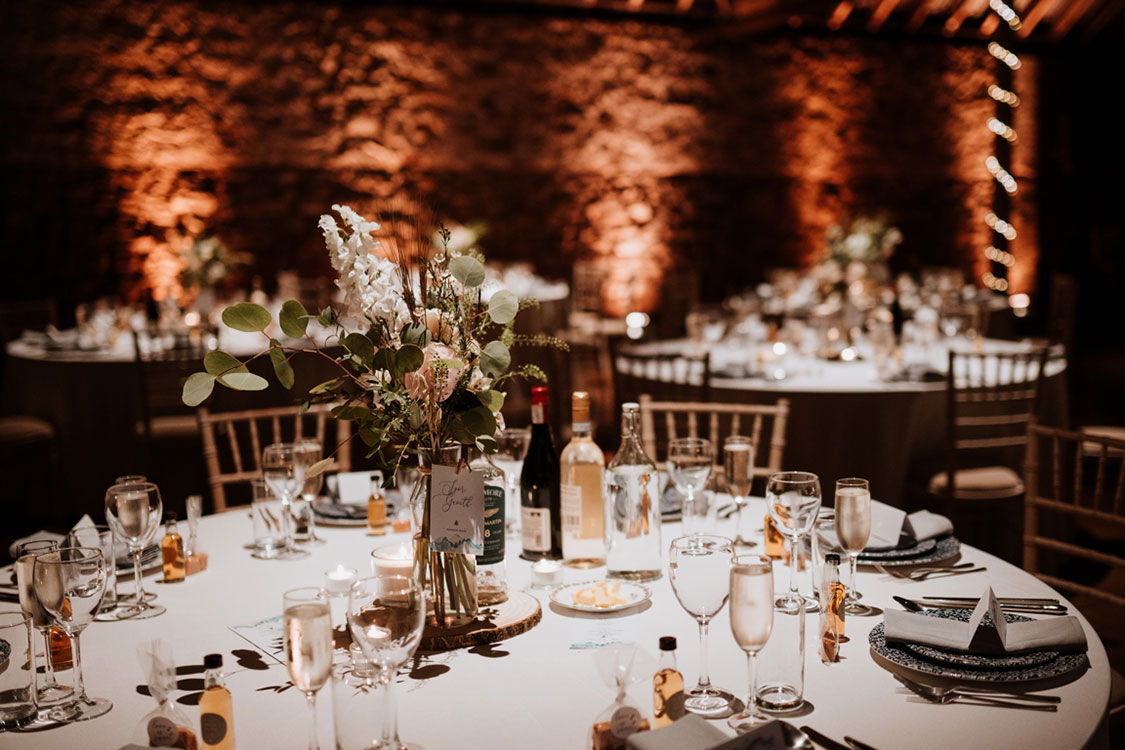
Not too tall, not too wide, The Greenshed Flower Studio's centrepiece arrangement is just right (Photo: Chic photo by Jacqui)
Do florists work alongside other decor experts?
While you let yourself be inspired by your rejigging plans, Kelly urges you not to forget that “most floral designers consider a level of styling as part of their own vision.”
Fiona adds, “While we have a good selection of candle-holders to hire, some couples have a vision that requires something a bit different.” If you’re thinking vintage books, larger lanterns or even mini disco balls (a favourite Helen would love to see more of), it can be helpful to collaborate with other suppliers to bring it to life.
Search for more wedding florists in Scotland here

